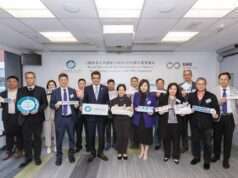Diversity & Inclusion (D&I) have become buzzwords in the corporate world. Simply put, diversity is the differences that we all have based on the various attributes of our identities, while inclusion is all about valuing and embracing those differences and allowing people to bring their whole selves to work. A phrase often used to explain diversity and inclusion is “Diversity is being invited to the party, and inclusion is being asked to dance.” . There is no point in having a diverse team if they do not feel included or heard.
The Black Lives Matter and MeToo movements added a sense of urgency to the need for racial and gender diversity in the workplace and other platforms. The calls for fair and equal representation have grown.
While there is a social justice argument for D&I, various studies went out to show the business case for having D&I in the workplace. The correlation between diverse employee compositions and higher business performance helped bolster the argument for more diverse and inclusive workplaces.
A landmark study by McKinsey released in 2015, Why Diversity Matters, made a clear business case for diversity in teams. According to the report “companies in the top quartile for gender or racial and ethnic diversity are more likely to have financial returns above their national industry medians.” This finding was further reinforced by studies that followed in 2018 and 2020.
Hong Kong, too has seen a growing interest and investment by companies in fostering D&I. While international businesses and large companies lead the trend, we are encouraged to see smaller and many local businesses also following suit. The growth is relatively small at the moment, but the trend is promising.
At the Ethnic Minorities Unit of the Equal Opportunities Commission, we are particularly interested in racial D&I. A key focus area is the provision of equal opportunities in employment for people of all races, particularly the disadvantaged racial groups. To promote racial inclusion in employment, we launched the Racial D&I Charter for employers in 2018. The Charter is a set of nine goals to help employers move forward on their racial D&I goals. By signing the Charter, organizations commit to improving their workplaces in terms of diversity and inclusive policies and practices.
https://unsplash.com/photos/98uYQ-KupiE
Starting with just 11 signatories in December 2018, we are proud to have over 200 organizations in our signatory network. These organizations come from various sectors and are of different sizes and compositions. Ranging from large multinational companies and local conglomerates to SMEs, NGOs, and social enterprises, they all have shown a commitment to the principle of racial D&I by signing the Charter.
Charter signatories benefit from learning from other organizations in the network. Through events, meetings, projects, training, and other activities, we can generate awareness about the importance of racial D&I and its implementation. One of the common barriers to the employment of racial minorities in Hong Kong is language. By urging companies to scrutinize the language requirement, they ask for by checking whether that requirement is commensurate with the needs of the job is one of the advice given out. We also encourage companies to improve cross-cultural understanding through training, events, informal employee groups, etc. Putting internship opportunities for disadvantaged youth can be a great way to enhance their exposure to more career choices. These are just some of the ideas and suggestions implemented by Charter signatories.
Equal Opportunities Commission
16/F 41 Heung Yip Road,
Wong Chuk Hang, Hong Kong
Hotline: 25118211 Email: eoc@eoc.org.hk Website: www.eoc.org.hk
Office hours: Monday to Friday from 8:45 am to 5:45 pm
Please contact the EOC if you need information regarding your rights under Hong Kong’s anti-discrimination ordinances and the complaint handling procedures.
Niru Vishwanath
Equal Opportunities Commission





